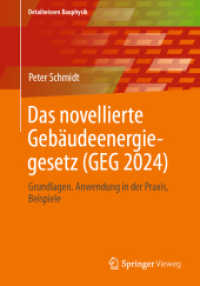Full Description
This volume makes important contributions to the growing body of descriptive and theoretical studies in Arabic linguistics. It focuses on the rich linguistic work being done on Arabic dialects. The papers on individual dialects draw attention to the micro-variation that exists, emphasize that they do not comprise a uniform group, and reveal the implications of dialectal variation for linguistic theory. The chapters are distributed over three parts: phonetics and phonology, syntax, and sociolinguistics. They address first and second language acquisition, historical linguistics, phonetics, aspects of negation, light verb constructions, raising verbs, and sociolinguistic variation. The book is indispensable reading for those working in dialect description, the analysis of Arabic and the Semitic languages, and linguistic theory more generally.
Contents
1. Acknowledgement; 2. Introduction (by Haddad, Youssef A.); 3. Phonetics and phonology; 4. Phonation and glottal states in Modern South Arabian and San'ani Arabic (by Watson, Janet C.E.); 5. Examining feature economy in Arabic dialects (by Lin, Cheng-Wei); 6. L1-English tense-lax vowel system influence on L2-Arabic (by Lababidi, Zafer); 7. On the status of derived affricates in Arabic dialects (by Elhija Mahajna, Dua'a Abu); 8. Syntax; 9. On NPIs and QPs in Sason Arabic (by Akkus, Faruk); 10. Temporal NPIs and NCIs as adverb phrases: The case of Jordanian Arabic (by Alqassas, Ahmad); 11. Clause structure in contact contexts: The case of Sason Arabic (by Akkus, Faruk); 12. The syntax of motion light verbs in Jordanian and Moroccan Arabic (by Ouali, Hamid); 13. Cyclic Spell-Out Derived Agreement in Arabic Raising Constructions (by Wurmbrand, Susi); 14. Sociolinguistics; 15. (q) as a sociolinguistic variable in the Arabic of Gaza City (by Cotter, William); 16. Index








